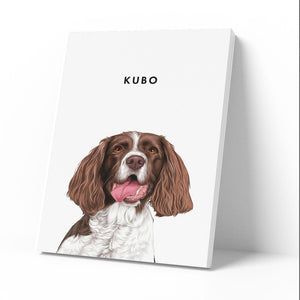My Turtle Has a Soft Shell: Should I be Worried?
A turtle's shell plays a significant part of its anatomy and it needs ample care. Every turtle owner should know the basics of turtle care in order for the turtle to live happy and healthy.
Why is a turtle shell important?
The turtle shell is more than just a "turtle house" or a covering but a part of the animal's skeleton. It is made up of bones, including the spine and breastbones. It is composed of many nerve endings and blood vessels and acts as a protection to the turtle's vital internal organs. So whenever you are handling your pet turtle, make sure to pick it up gently with care.
What are the possible causes of a turtle's soft shell?
In reality, it takes a couple of years for a turtle to mature and develop a perfectly hard shell. Baby turtles usually have soft shells themselves, but if you feel that your turtle's shell is "too soft," then consider asking your veterinarian for potential problems or deficiencies. Soft shells usually signal a Metabolic Bone Disease (MBD), most popularly known as Softshell Syndrome, which results from unhealthy eating or lack of light. Turtles need nutrients, particularly calcium, to maintain a robust skeletal system. This article will walk you through the primary causes of why your turtle has a soft shell and how to prevent it.
Calcium Deficiency
Whenever you don't feed your turtle the right amount of minerals, particularly calcium, they may develop Metabolic Bone Disease (MBD). When this happens, the shell begins to rot and can become very weak and susceptible to more severe infections. The generic pellets you buy at the pet store can lack nutrients, so there is a very high chance that your turtle is not consuming enough vitamins to maintain its healthy exoskeleton. If you worry about this from happening, try including supplements in your turtle's diet. One of the easiest ways to increase your pet's calcium dose is by adding calcium blocks into its water dish.
Lack of Nutrition
Most turtles are meat-eaters, and gradually, they become vegetarians as they age and tend to focus more on eating plants and vegetables in their diet. An ideal turtle diet consists of the following: insects, protein pellets, cooked chunks of meat, fruits, and vegetables. Sometimes, due to genetic or environmental factors, your turtle may lack the nutrients it needs. If this situation happens, consider buying supplements to keep your turtle in optimum health always.
UVB Light
Turtles love basking in daylight. Their very much needed Vitamin D helps grow their bones and make their shells sturdy, so make sure that they get a daily dose of sunlight whenever you can. However, if you decide to adopt a turtle and natural light isn't available in your area, you must consider giving them UVB lighting as soon as you get them. If you want, purchase UV lights and put it near your tank as alternative. If your pet doesn't get the ample amount of light it needs, it will develop a soft shell that can build on other complications. If a white cast also starts to appear on its shell, then it means you aren't giving enough light, which can weaken its health drastically.
The Importance of Basking Spots
When turtles are being adopted into captivity, they lose their access to the natural environment. Different species require different living conditions, but overall, every turtle needs enough space to roam around and explore its home. They need to bask, get dry and absorb light to help them get vitamin D3 which is extremely important for their diets.
Create accessible basking spots for your turtle so they can exit the water and dry themselves. Basking platforms also help them take advantage of their sunbathing time. Make the basking spot safe and not too steep so your turtle won't get injured or slip off. Avoid having tight spaces in the tank or cage as well, to prevent your turtle from getting stuck.
How do I prevent my turtle from having a soft shell?
To summarize the points we listed above, these are the things to take note while taking care of your turtle:
- give it access to enough light
- provide a healthy, balanced diet of meat, vegetables and fruits; add supplements with calcium and phosphorous as well
- create a basking platform so your turtle can easily bask regularly
- keep your turtle's living space clean by providing fresh water, bedding, and food regularly; any uneaten food and leftover water should be removed to prevent molds and infection in your pet
Regularly check on your turtle to see if unwanted complications are arising. For example, if you sense that your pet is losing weight, you should immediately take it to the vet. The sooner you notice something problematic, you'll be able to treat it sooner and keep your pet healthy.
Maintaining a good diet and a suitable environment with adequate lighting will ensure your turtle's good health and develop a hard shell. Ensure that your tank temperature should only be between 75-86 degrees Fahrenheit, no more, no less. Keep your turtle within the right temperature and humidity levels to keep it safe and comfortable. Always check on your turtle every day to ensure that they are living happily and in healthy conditions.
Sources:
https://www.turtleholic.com/why-is-my-turtles-shell-soft/
https://keesaquarium.com/blog/58824/turtle-shell-care




